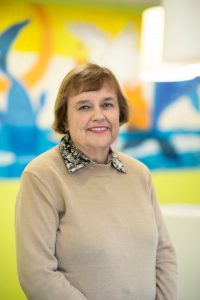Article from 2020/2021 Auxiliaries Annual Report
Despite cerebral palsy being the most common physical disability in childhood, there is still so much that is unknown about the condition. What are the causes? What treatments are best? What are the optimal ways to support children to ensure the best quality of life?
Luckily, thanks to support from the Trailblazers and Special Kids EBC Auxiliaries, children and their families are benefiting from a longitudinal study of this condition.
Cerebral palsy is a physical disability that affects movement and posture as a result of a number of different types of maldevelopment or injury to the brain that occur early in life. Disability can range from mild to severe.
“Through an internationally renowned study at the RCH, the Victorian Cerebral Palsy Register Project is advancing our knowledge and providing better help and support for everyone living with cerebral palsy, their families and the communities in which they live,” said RCH paediatrician Professor Dinah Reddihough AO.
Established by Dinah in 1987, the Victorian Cerebral Palsy Register Project collects information on people with cerebral palsy, born or living in Victoria since 1970. With 6,200 people registered, this important project is one of the largest of its kind in the world.
By collecting information about Victorians with cerebral palsy including demographic information, birth details, known or apparent causes, type and severity of the cerebral palsy and any associated impairments, researchers at the RCH and campus partner the Murdoch Children’s Research Institute can monitor trends in the number of new cases of cerebral palsy over time in Victoria. This is important as it allows them to identify factors that appear to increase or reduce the risk of cerebral palsy. The register also allows researchers to undertake large trials and research projects to investigate the effectiveness of various treatments and understand how children with cerebral palsy change as they get older.
“The register underpins everything that we do. It’s the backbone of our research and has allowed us to undertake over a hundred extremely important projects. It’s satisfying to have established something that’s very important in filling a gap in knowledge and having such an impact on so many children and families,” said Dinah.

Professor Dinah Reddihough AO
It’s not an overstatement to say The Victorian Cerebral Palsy Register Project has changed the lives of hundreds of thousands of children with cerebral palsy, not just in Australia but right around the world.
As the register holds information on all children with cerebral palsy in Victoria, Project Manager Dr Sue Reid and the register team collaborated with the Orthopaedic Department to demonstrate the association between the severity of cerebral palsy and the risk of hip displacement which causes extreme pain.
This led a team from across the RCH and further afield to develop ‘Australasian Hip Surveillance Guidelines’ which have been implemented in many parts of the world. The guidelines provide information about the optimum frequency of X-rays to minimise painful hip displacement while at the same time, reducing unnecessary and potentially damaging radiation exposure.
The RCH team is now building an electronic platform to monitor hip displacement in all children with cerebral palsy across Victoria, so that measures can be put in place to detect the problem early and instigate preventive strategies.
“The register will play a role in ensuring that all children with cerebral palsy are monitored, and have the right X-rays at the right time, preventing terrible pain and loss of function in children when it is not picked up in a timely fashion,” said Dinah.
Using the register, researchers investigated medication use in epilepsy, a condition which affects almost half of children with cerebral palsy. Until recently, it was thought that children would need to be on epilepsy medication for the rest of their lives. However, researchers found the prognosis is much better than they originally thought and many children can come off their epilepsy medication.
“A recent study of epilepsy has important, practical management implications. Contrary to previous views, we found the prognosis is much better than we thought and that epilepsy is likely to resolve in many children with cerebral palsy and anti-epilepsy medication should be used with caution and reassessed regularly,” said Dinah.
While the register was established over 30 years ago and has been instrumental to the understanding of cerebral palsy and how best to treat patients, funding is always a major challenge.
“While everyone recognises how valuable registers are in advancing care and research for patients, obtaining funding can be difficult through grants and traditional channels,” said Dinah.
“Words cannot express how grateful we are to the Trailblazers and Special Kids EBC Auxiliaries for the funding support. The only way we can really improve outcomes is to do high quality research and we know this register is vitally important and enormously helpful; and we are deeply thankful for the support,” said Dinah.